The wonderful city of Thessaloniki is the second largest city in Greece. It is the perfect choice if you want to see ancient monuments, azure waters and hot sandy beaches. With a rich history dating back to Roman, Byzantine and Ottoman times, the city center has been included on the UNESCO World Heritage List and offers tourists the opportunity to admire such architectural gems as the White Tower, the symbol of the city, or the Rotunda, an impressive building from the 4th century.

A walk along the seaside promenade will provide a wonderful seaside atmosphere combined with the bustling city life. Thessaloniki is also famous for its numerous festivals, including the famous International Film Festival. We will have the opportunity to learn about the history and culture of the region through museums rich in exhibits. Thessaloniki also offers many options for shopping enthusiasts. Visitors can explore the numerous boutiques and shops in the Tsimiski shopping district and shop at the famous Modiano market.
Location
Thessaloniki is located in the northern part of Greece, in the Macedonia region. The city is located on the shores of the Aegean Sea, in the bay between mainland Greece and the Chalkidiki peninsula.
Aristotelous Square
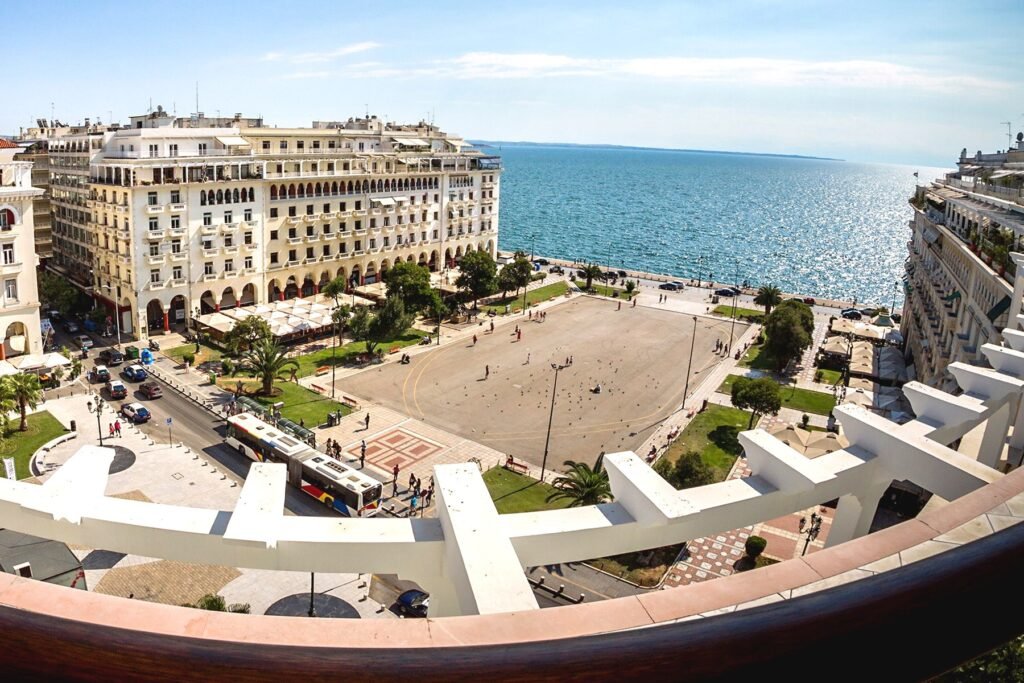
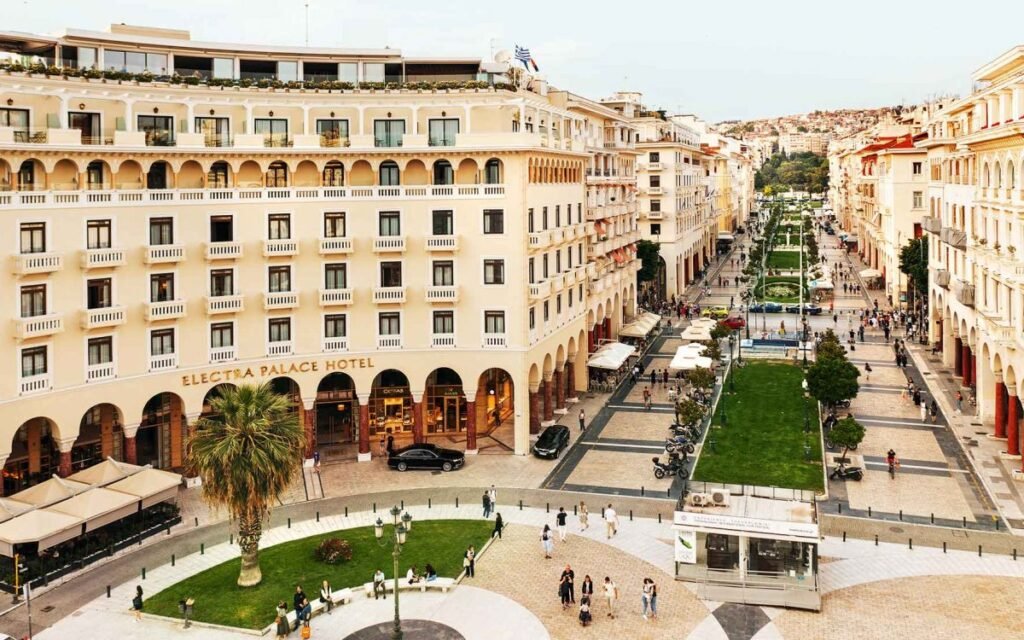
Aristotelous Square is a famous square, one of the main attractions of the city, presenting a large open space with beautiful stone paving and surrounding tufts of grass with lush trees. The square is surrounded by magnificent neoclassical buildings, some of which are of great importance to the city.
The Olympion Theatre is one of the most important cultural centers in the area and is the seat of the Thessaloniki International Film Festival. It is also home to the Electra Palace Hotel, a 5-star accommodation offering modern luxury.
The Roman Forum
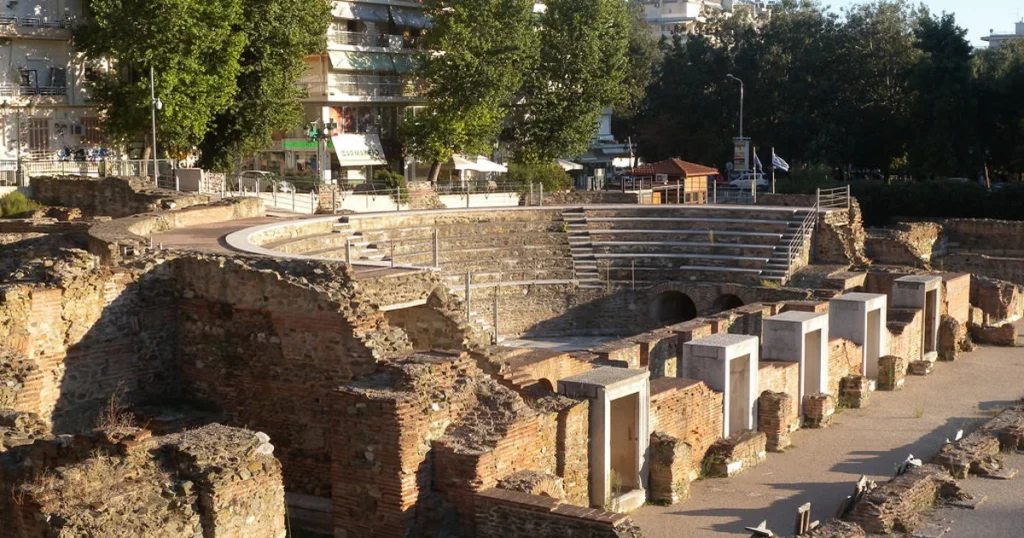
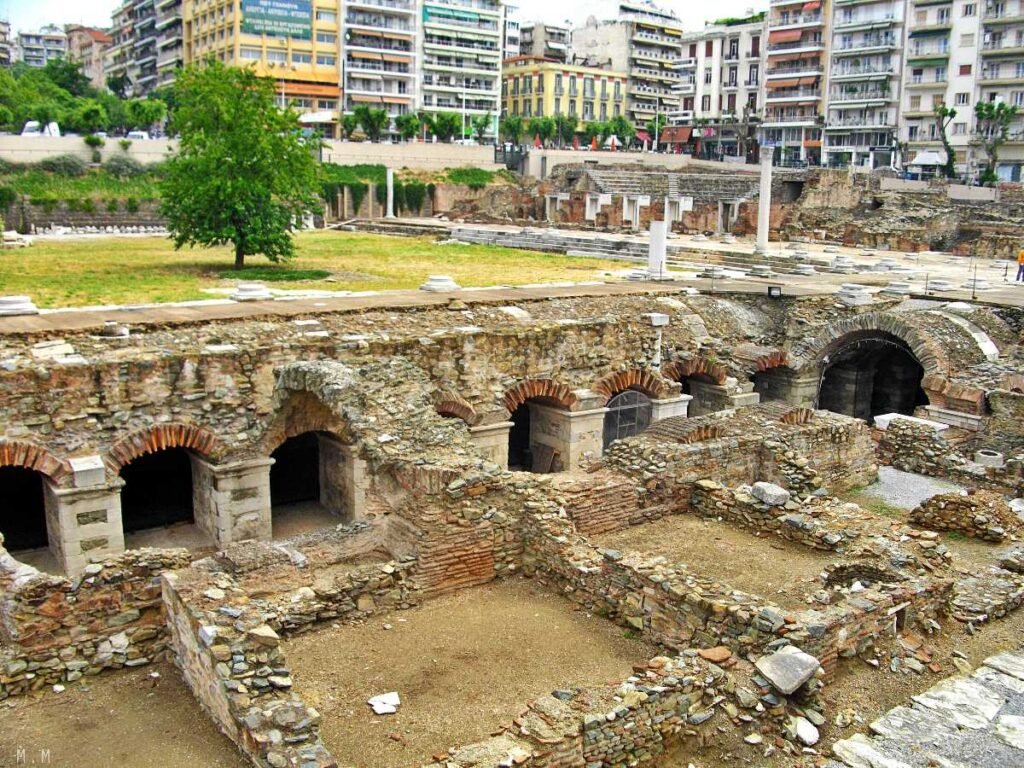
On the northern side of Aristotelous Square, in the heart of Thessaloniki, located Roman Forum is one of the town’s most significant ancient monuments.
Erected on the site of a pre-existing Hellenistic agora, it lay at the junction of two major highways: the Via Regia (the present-day Egnatia Street) and a vertical road that probably led from the seafront to the acropolis. It was made up of two monumental squares, one of which remains buried beneath Aristotelous Square.
The Arch Of Galerius & Rotunda
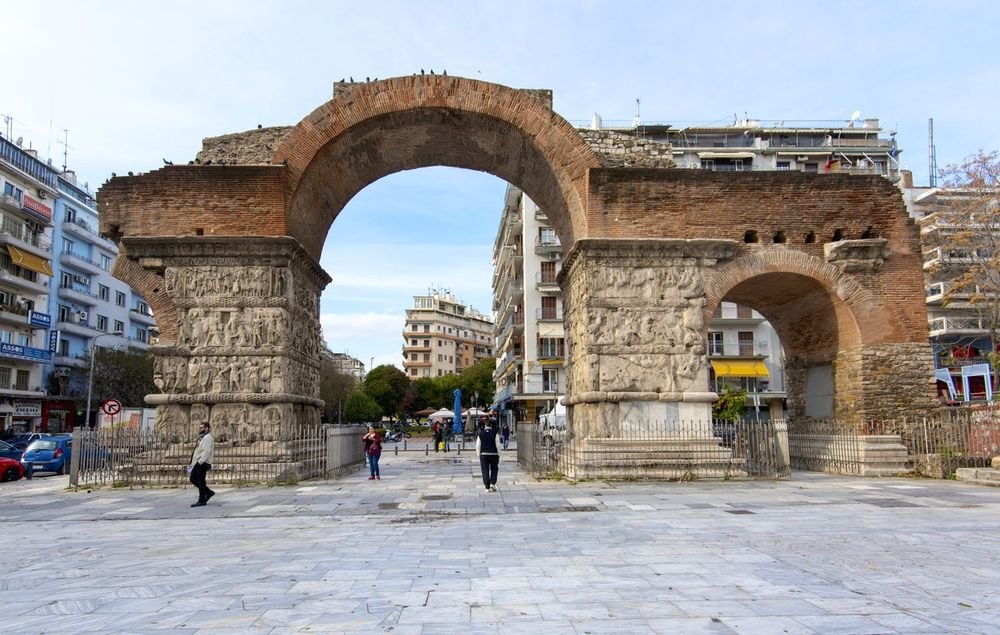
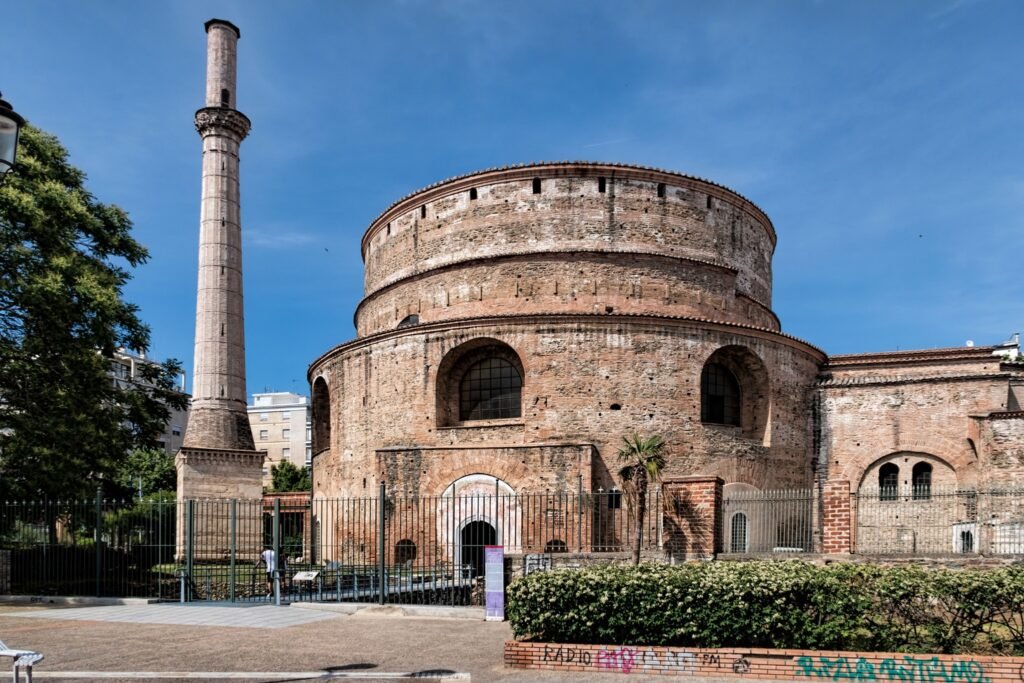
Rotunda and the Arch of Galerius (Kamara) are important archaeological monuments of Roman period in the heart of the urban fabric of Thessaloniki. The Arch of Galerius was dedicated to celebrate the victory of the Roman Emperor in the East.
Rotunda, the monumental round structure was originally part of the palace complex of Galerius. It has gone through multiple periods of use and modification as a Christian church and a mosque. Both monuments dominate the landscape today and they become part of everyday life.
Thessaloniki Waterfront
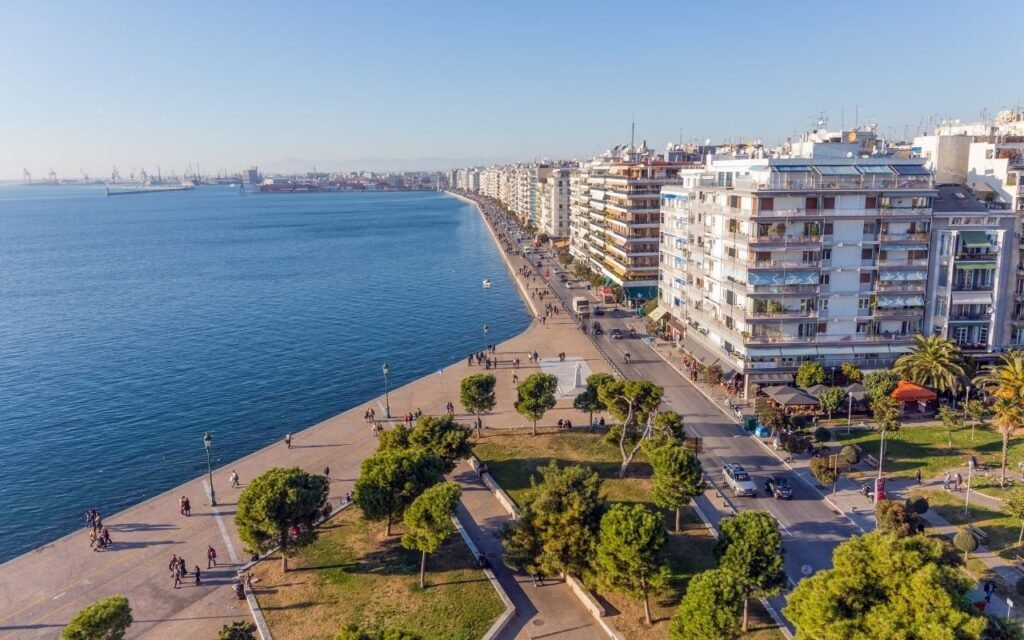
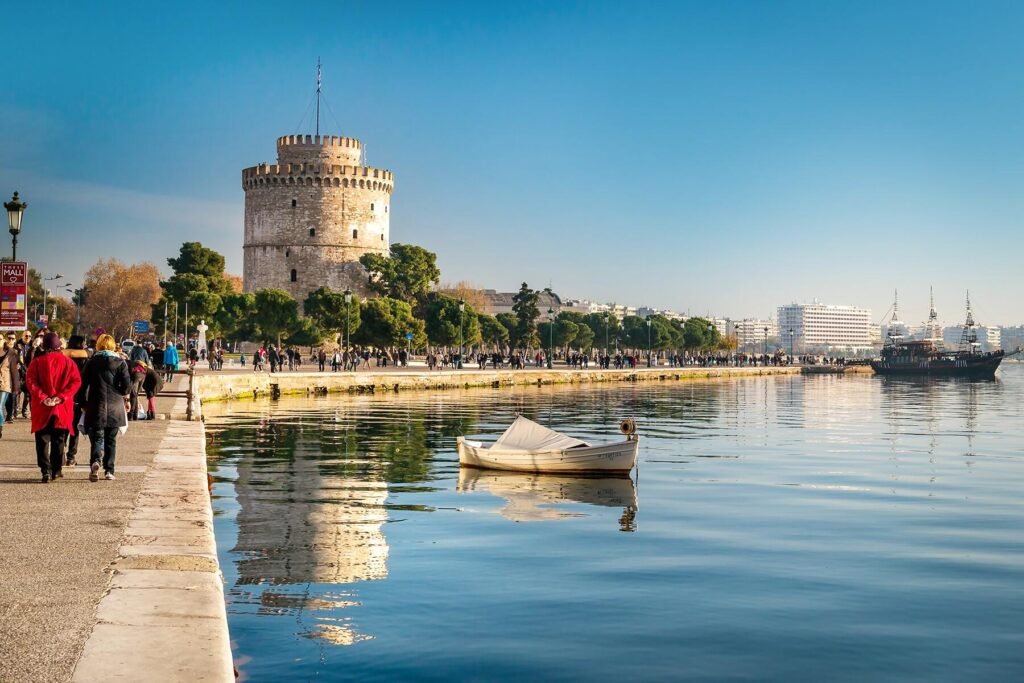
Thessaloniki Waterfront is one of the most characteristic parts of the city and setting along the Thermaikos gulf. To really get the taste of Thessaloniki you need to visit not just its historical landmarks, but also those spots that keep adding new tales. Heading east from the Port you will find plenty of both worth checking out.
The White Tower
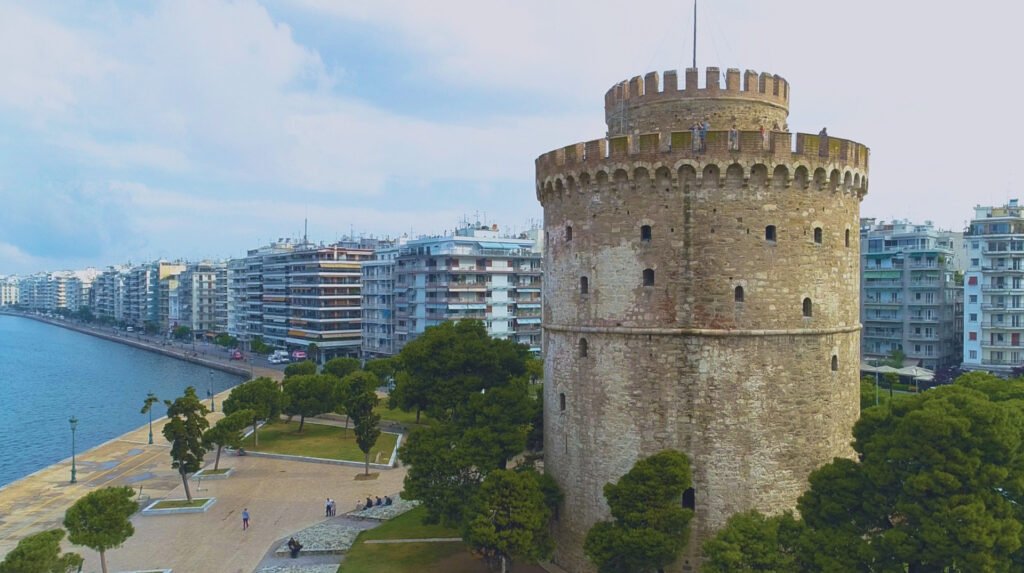
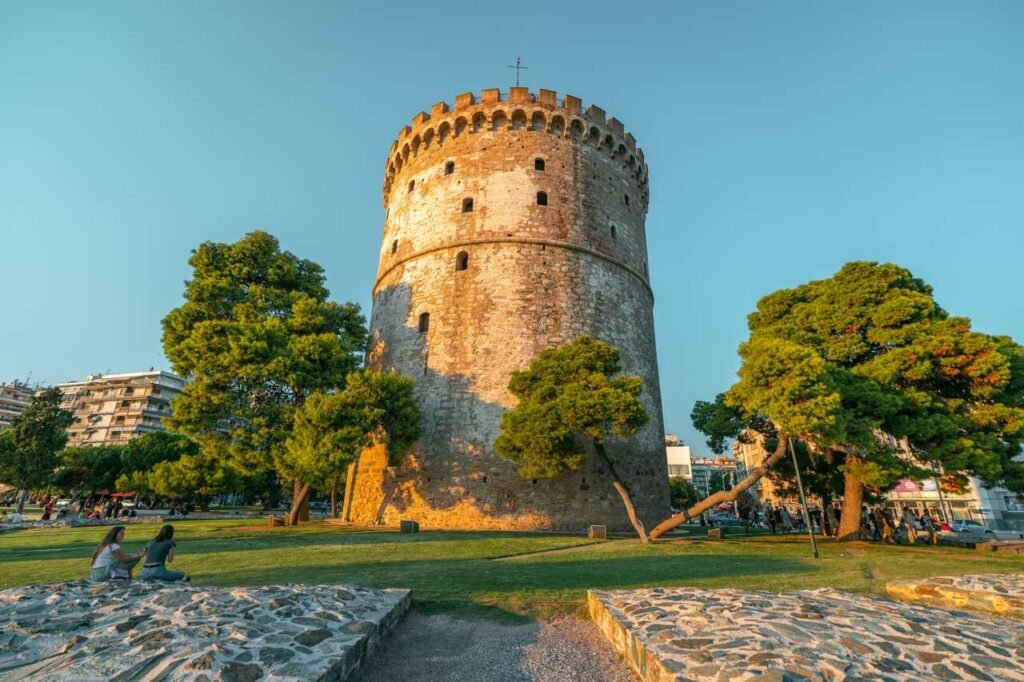
The White Tower is the most famous landmark of Thessaloniki and a symbol of the city due to its prominent location, long history and impressive architecture. The historical monument is located on the seafront.
It was built in the 15th century by the Ottoman Turks on the site of the older fortifications of Vesinium, but its exact shape and architecture are still a matter of debate among scholars. It is a cylinder 34 meters high and 23 meters in diameter with a smaller tower placed on top. The structure was part of the old city walls of Thessaloniki and was originally used to defend the port.
Thessaloniki Old Town

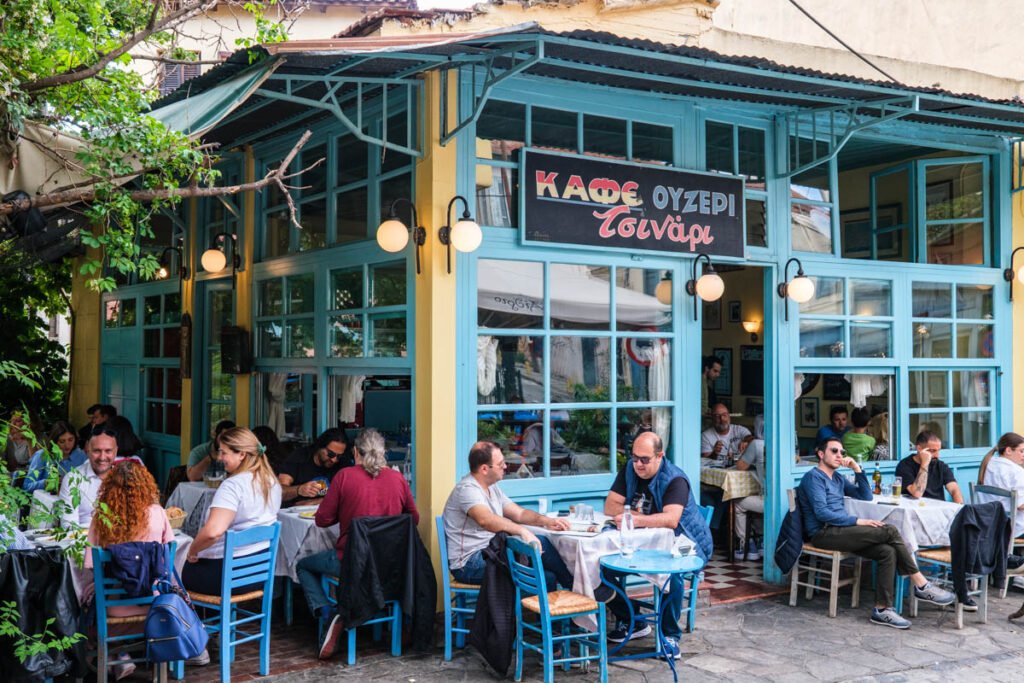
One of the areas that captivates visitors and locals alike is the old town. It is located in the northern part of the city and has some old monasteries and churches. The streets are also filled with gorgeous stone houses that offer a nice backdrop to the charming views. Here’s a look at what you can do while visiting the Old Town of Thessaloniki:
- Vlatadon Monastery
- Castle of Thessaloniki
- Ataturk Museum
- Agios Nikolaos Orfanos Church
Ladadika Street
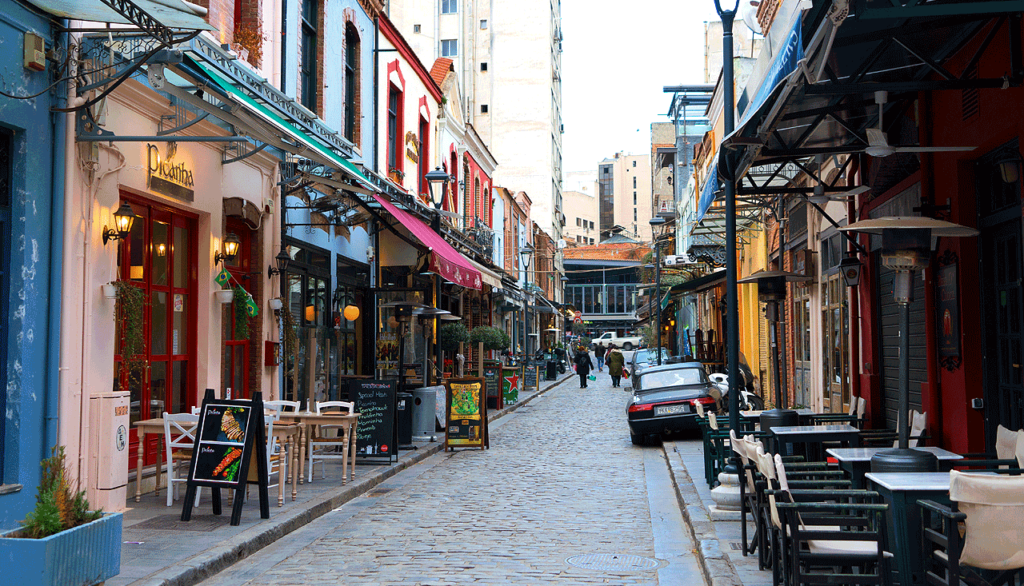
Ladadika is one of the oldest and most famous districts of Thessaloniki, which is extremely popular not only among locals but also among visitors to the city. A pedestrian zone with a large number of different small restaurants, cafes, taverns and clubs.
Church of St. Dmitry in Thessaloniki
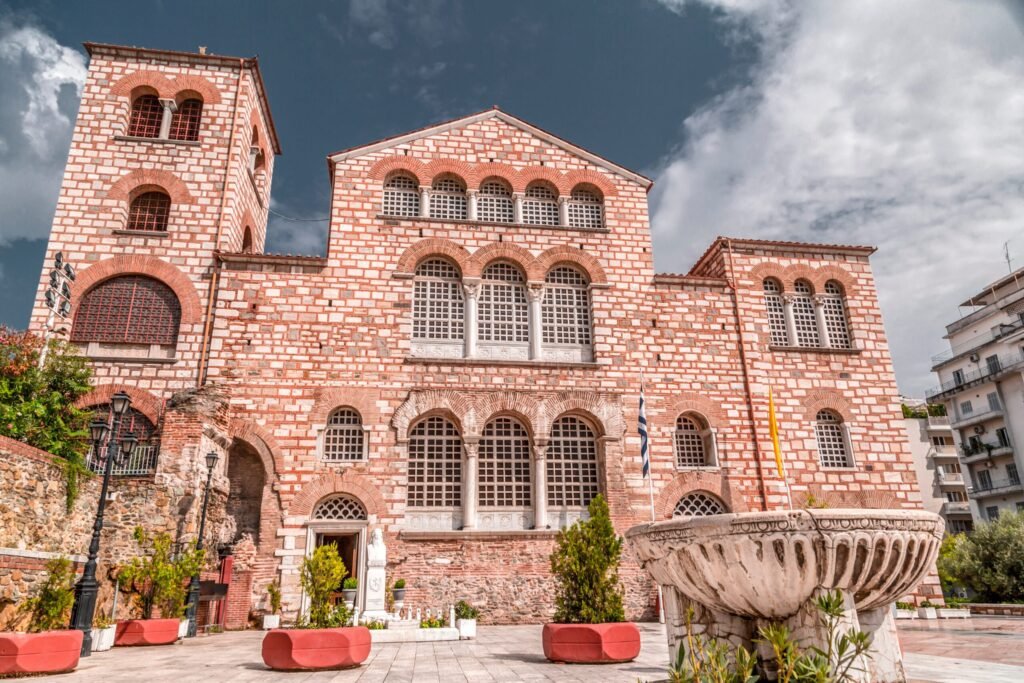
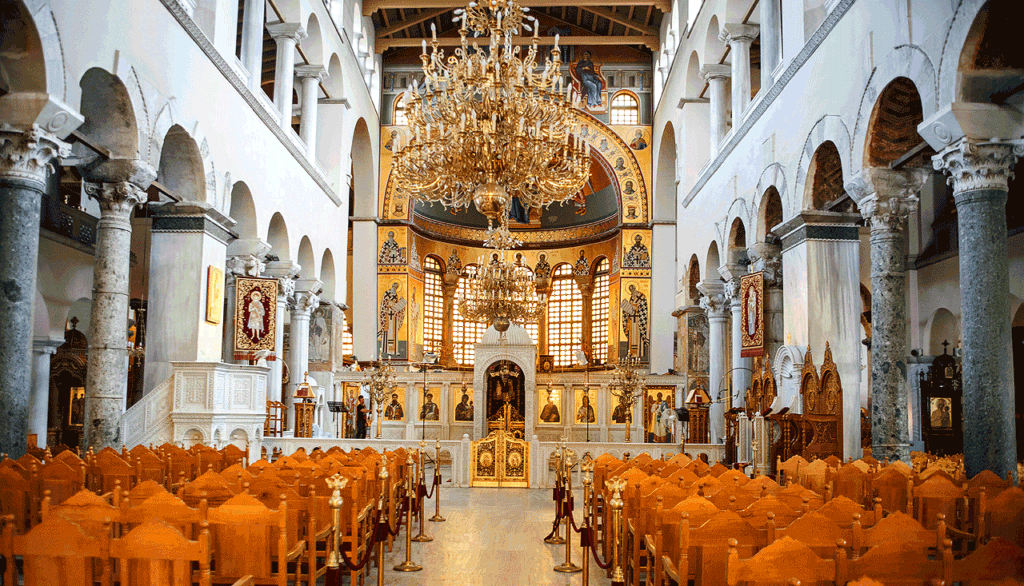
The Church of Agios Dimitrios in Thessaloniki is a beautiful Byzantine basilica, a UNESCO World Heritage Site, and one of the city’s main attractions. It is the church of Thessaloniki’s patron saint, Agios Dimitrios (Saint Demetrios), and its history is deeply intertwined with many key events in the city’s life.
The Church of Agios Dimitrios is a focal point for sightseeing in the city, both secular and sacred. It is also a building overlooking the Roman Forum and the Gulf of Thermaikos.
The Monument Of Alexander The Great
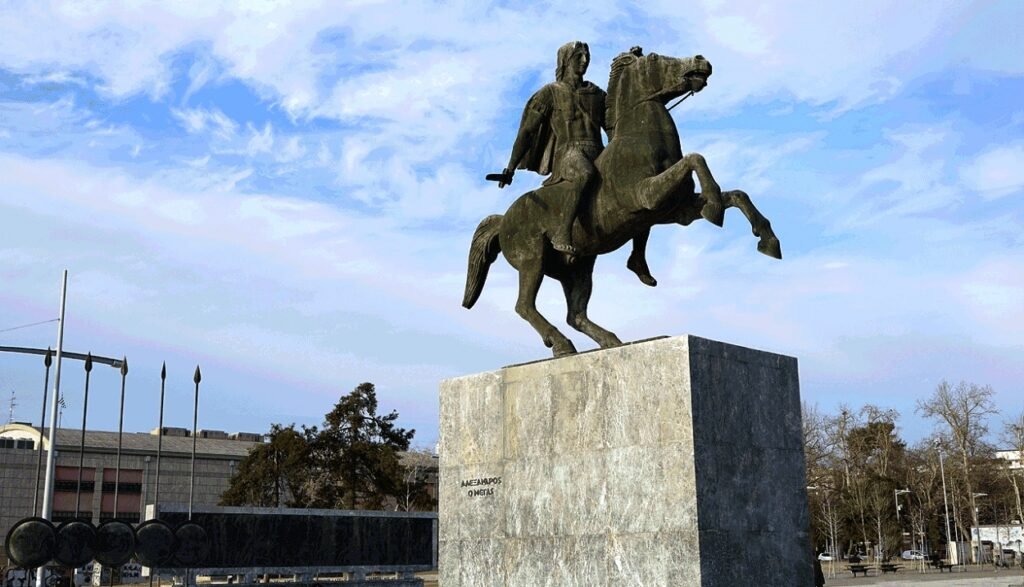
In the area of Nea Paralia you’ll find the monument of one of the most famous and influential personalities of all times. This is the monument of Alexander the 3rd, also known as ‘Alexander the Great’. Born in 356Bc in Pella, Macedonia he was the son of King Phillip the 2nd of Macedon and Princess Olympiada whose origin was from Epirus. He had the privilege to be educated by one of the greatest philosophers of all time, Aristotle.
Hammam Turkish Baths
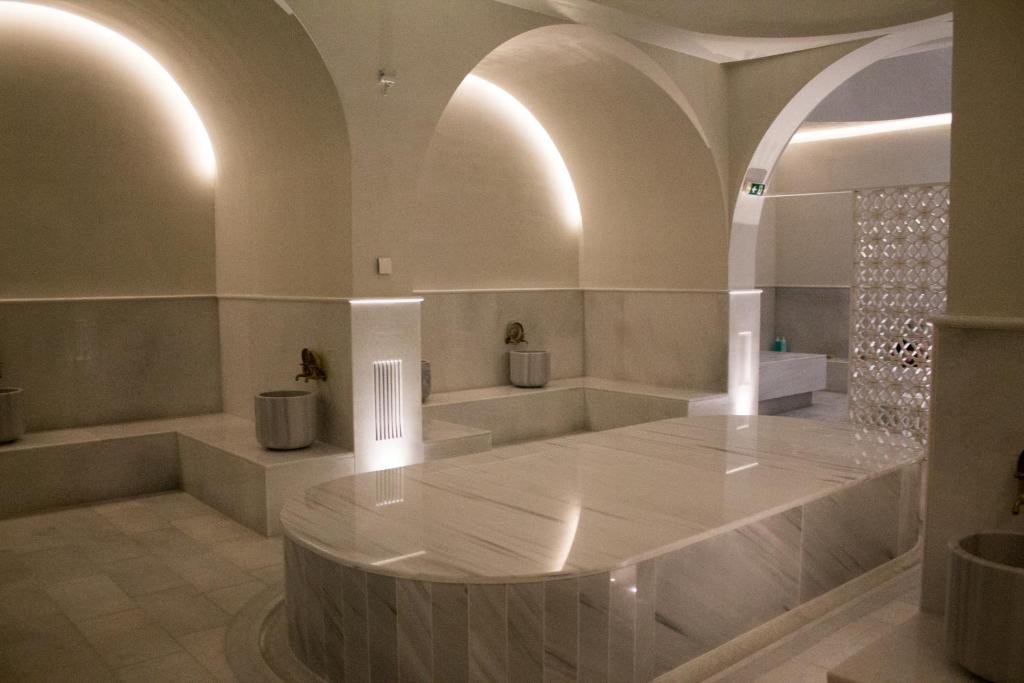
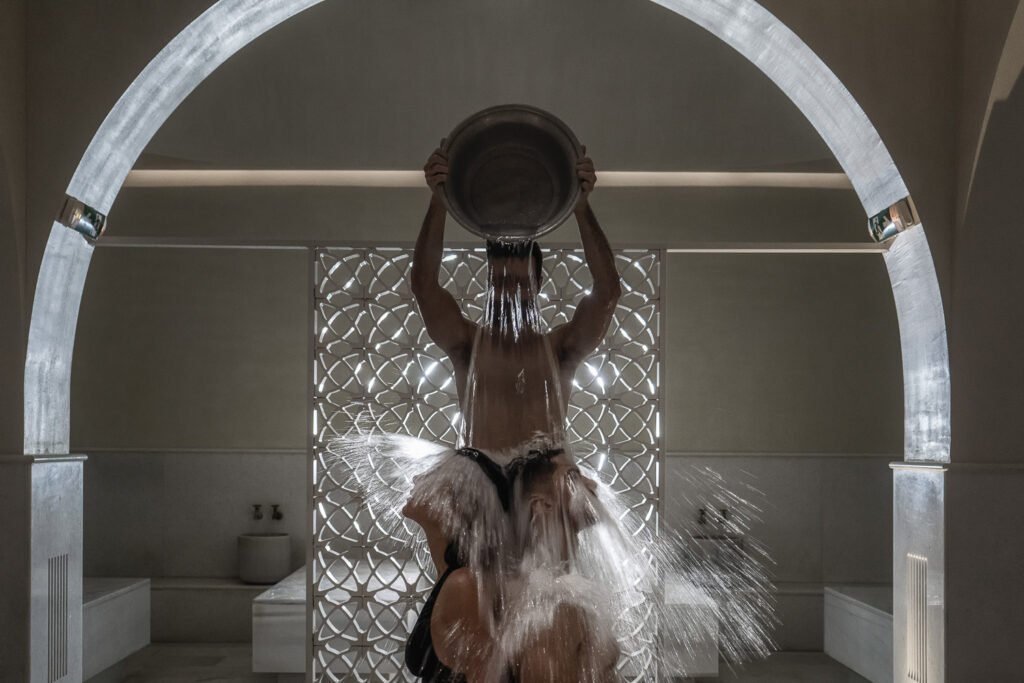
On Megalou Alexandrou Street 2, in the Makedonia Palace Hotel, is the hammam, a modern space with respect for the traditions of traditional baths. In the hammam baths we will discover the magic of the oriental bath, with its impressive dome, large marble bench.
The baths bring back traditions that relax, cleanse and rejuvenate the body and soul. It is an oasis of beauty, warmth and peace with traditional bathing rituals along with characteristic massages and rejuvenating facial treatments.
Archeological Museum Of Thessaloniki
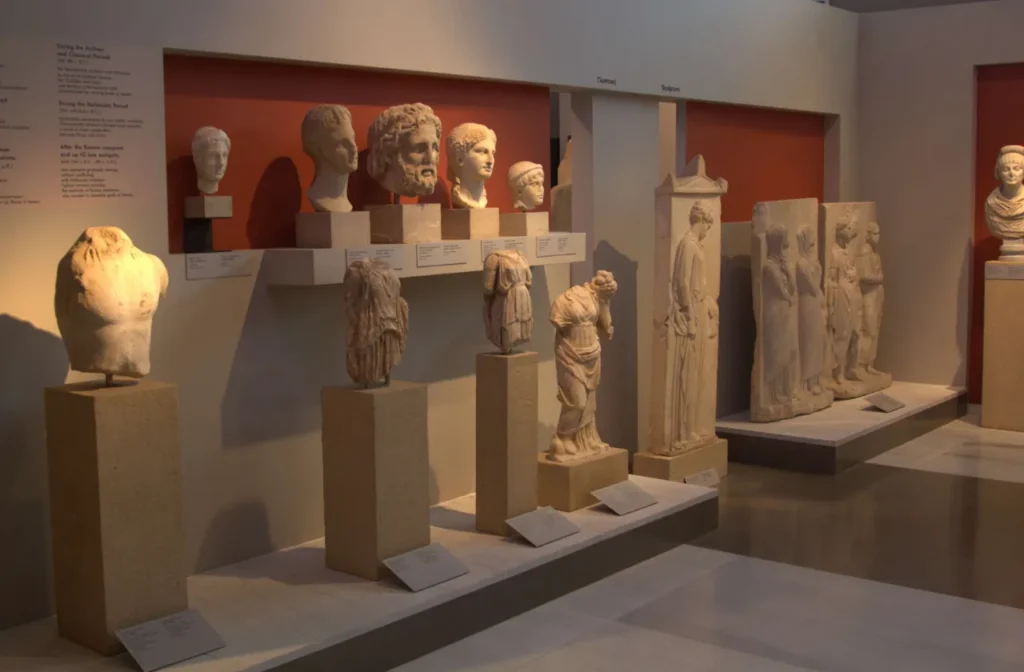
The Archeological Museum invites you to explore the fascinating world of ancient Macedonia, Alexander the Great, his father King Philip, and much more. The museum is located in the city center of Thessaloniki and is easily accessible by bus, taxi, or on foot. Combine your visit with other nearby attractions such as the White Tower or the Rotunda.
Museum Of Byzantine Culture
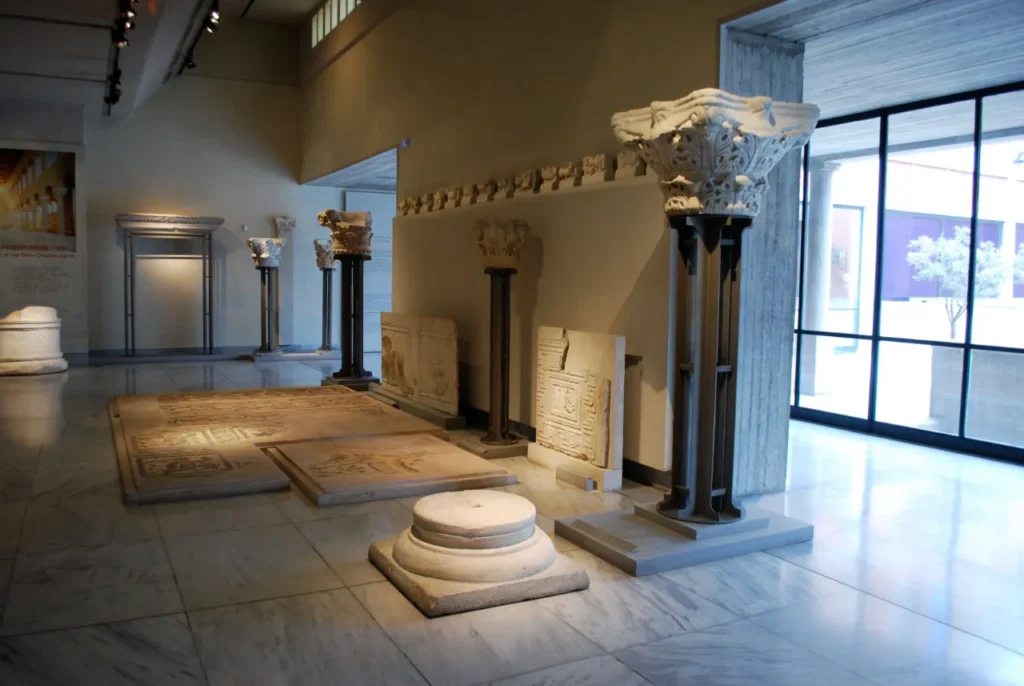
The Museum of Byzantine Culture is housed in the historic building of the distinguished architect, painter and poet Kyriakos Krokos from 1989 to 1993. On an area of 3,430 m2 and in eleven rooms, aspects of Byzantine and post-Byzantine culture are presented through original exhibits – mainly excavated in Thessaloniki and Macedonia in general -, wall graphics and multimedia.
The museum has fully equipped conservation laboratories and archaeological model storage rooms, an educational programs room, an outdoor educational space, a temporary exhibition wing, a multi-purpose hall, two amphitheaters, a souvenir shop and a café-restaurant.
War Museum of Thessaloniki
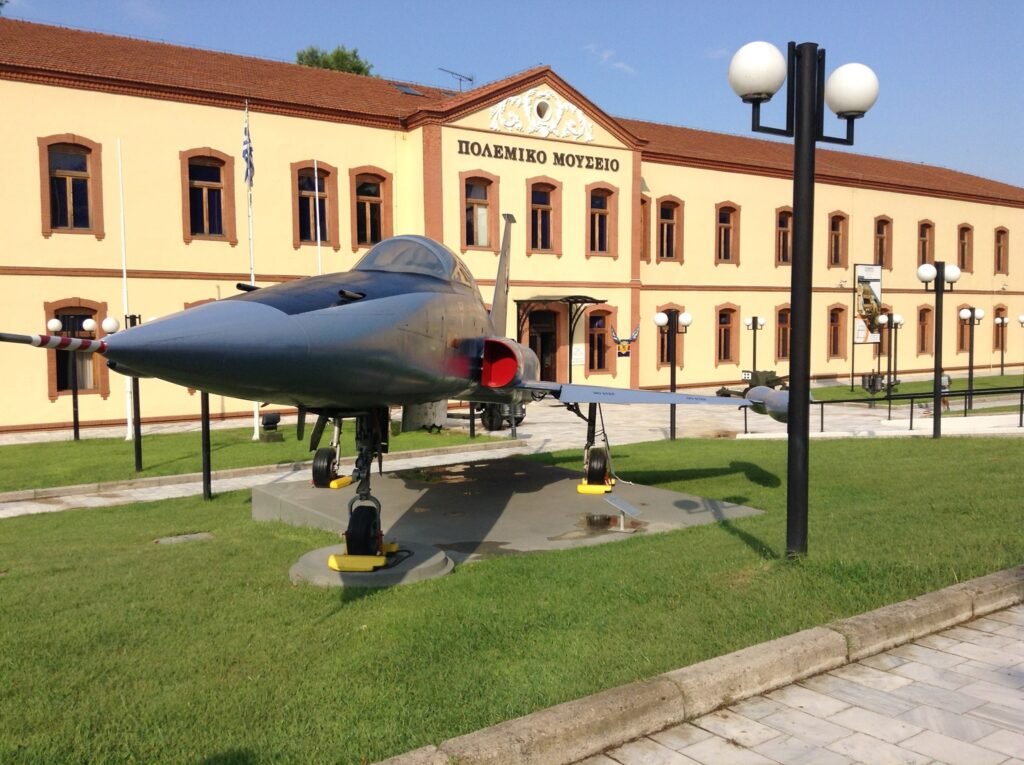
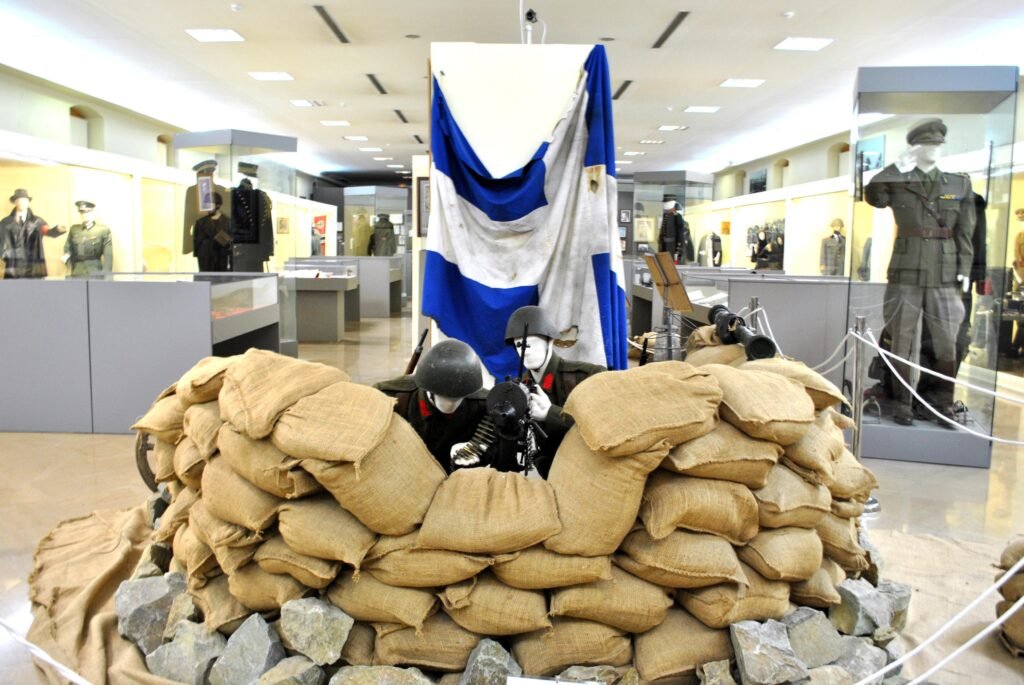
The War Museum of Thessaloniki houses over 10,000 relics that tell the story of modern Greece. Starting from the pre-evolution years and ending with the Turkish invasion of Cyprus in 1974, visitors have the opportunity to relive the Greek War of Independence, the Balkan Wars, and the two World Wars.
Within this historical framework, visitors also have the opportunity to interact with exhibits belonging to different nations that participated in all eras, whether as enemies or allies of the Greek Armed Forces.
MOMus-Macedonian Museum of Modern Art

MOMus-Museum of Contemporary Art is an art museum with a contemporary collection that has been donated by artists. From the sculpture of the sea urchin to the abstract painting of the blue hat to the installations created with his teddy bear, this museum has become a space where you can see how art continues to live and breathe in different ways.
Heptapyrgion of Thessaloniki
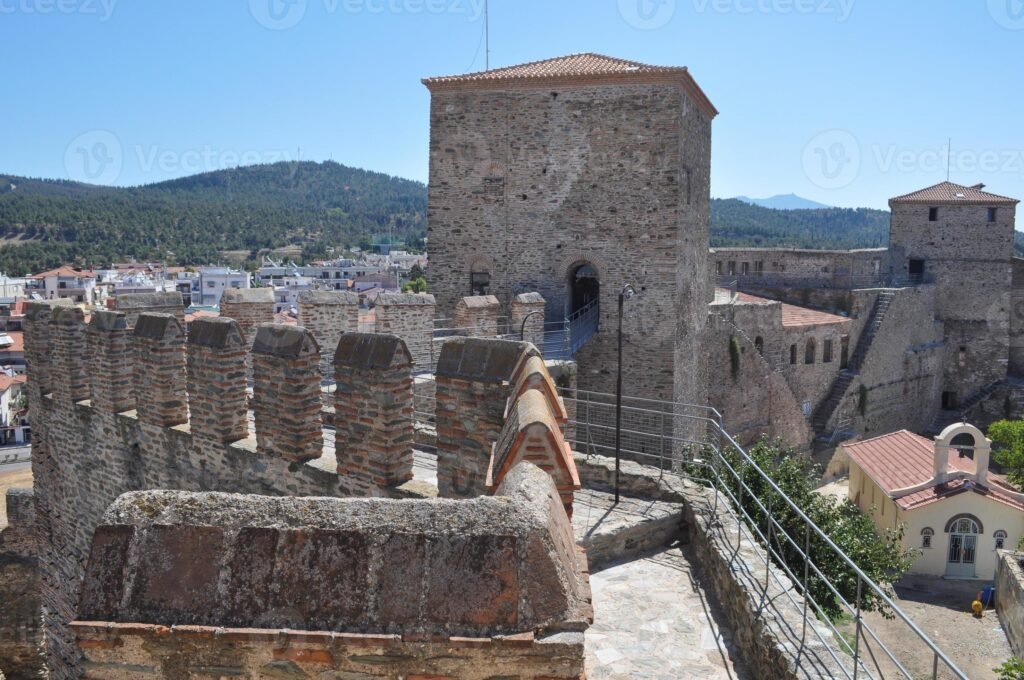
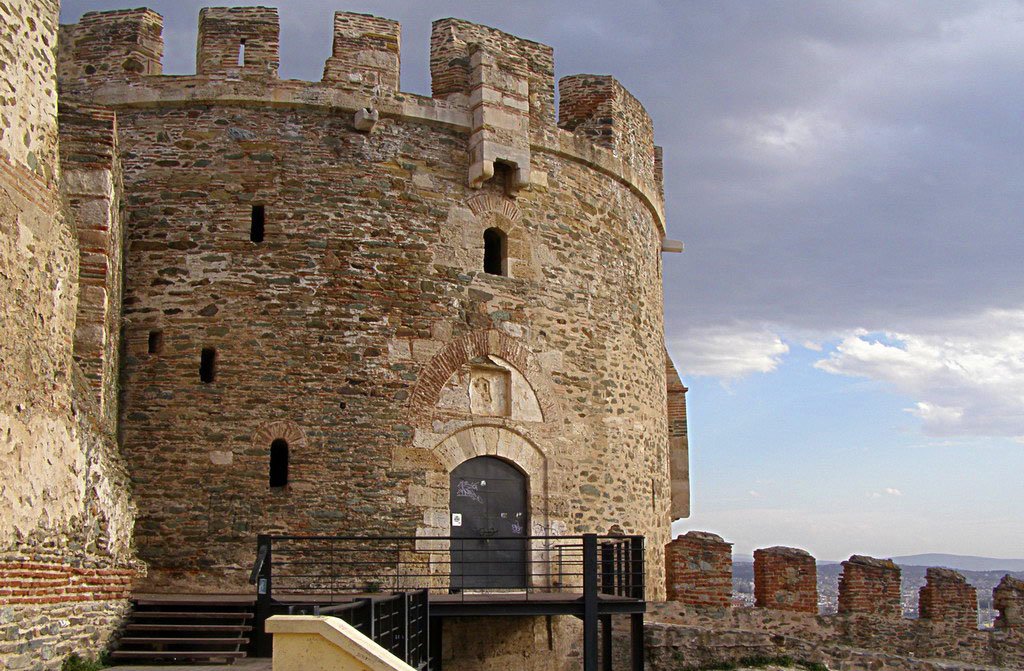
The Heptapyrgion Fortress is an imposing ancient structure with a long history. The fortress is also known as Yedi Kule. The name translates to “Fortress of Seven Towers,” the fortress actually features ten towers that were built at different times.
The Heptapyrgion’s northern towers were either built during the fourth century with Thessaloniki’s original walls or during the ninth century. The southern towers were probably built during the 12th century. During the later 19th century, the fortress was converted into a prison. The prison held political prisoners during World War II. In 1989, the prison facilities were relocated.
Best Beaches in Thessaloiniki:
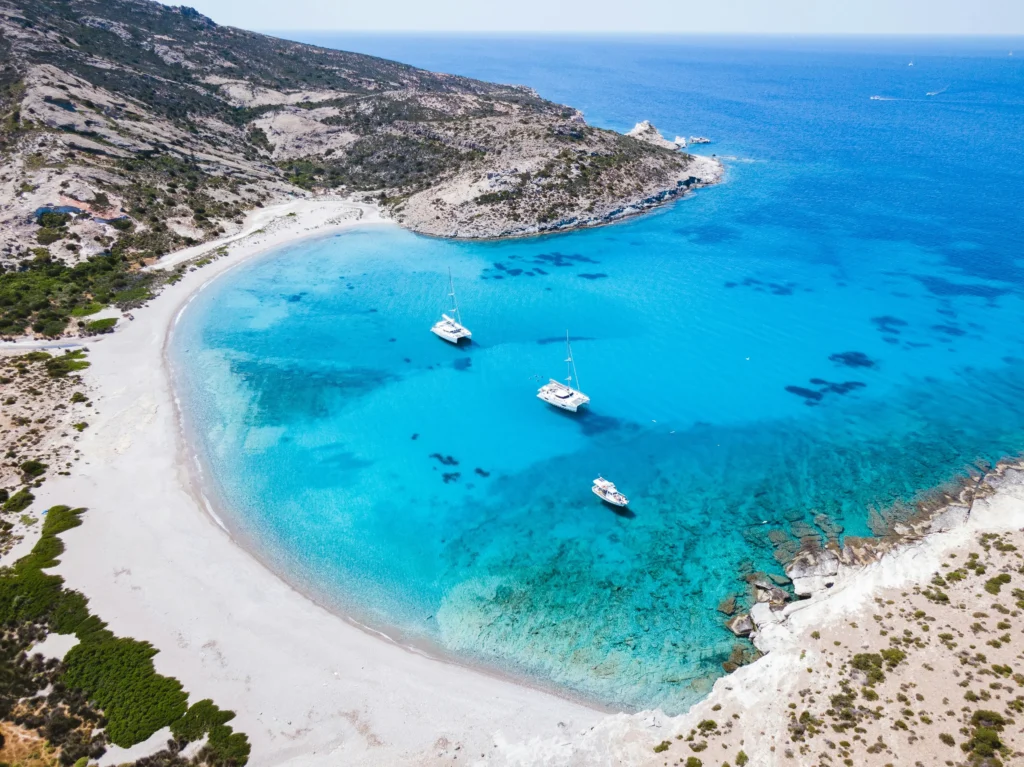
- Epanomi Seaside Park — A gorgeous sandy beach nearest to the city center
- Nea Kallikratia Beach — Classic tourist beach with umbrellas, lounge chairs, and beachside drinks
- Surfer Beach ANGELOCHORI — An ideal spot for watersports, flying kites, and other active ventures
- Kalyves Beach — A distance from the city center, Kalyves Beach has less touristy vibes and crystal-clear water
